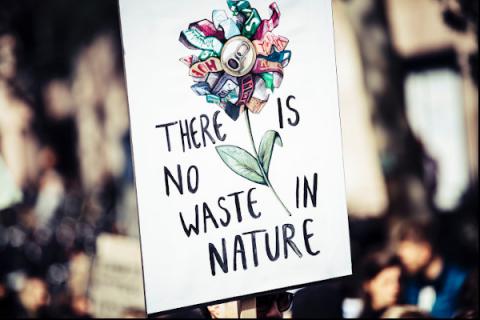The Rise of Environmental Consciousness in Businesses and Brands

Opinion:
While the world watched a tough, passionate 16-year-old from Sweden take on the very real and pressing issue of climate change, I kept thinking about the eventual impact on brands. After all, an estimated 7.5 million people across the world participated in the climate strike, and many others supported virtually. The end result is that whether brands like it or not, eco-consciousness is now firmly on consumers’ minds and their awareness is sure to increase as the effects of climate change continue to escalate.
This presents both a challenge and an opportunity to brands that wish to address their customers’ increasing eco-mindfulness, but have yet to do so or don’t know where to begin. The good news is that there is much to be gained by embracing this growing environmental awareness with brands positioning themselves as purpose-driven. There are three important lessons that brands can learn from Greta Thunberg.

Eco-Awareness is Rapidly Increasing
I was in awe watching the global climate strike unfold on Twitter. I know that environmental consciousness is on the rise, but I was surprised by the millions of people who hit the streets and the sheer number of countries participating (an estimated 180 countries took part). I couldn’t help but view the crowds from a branding lens.
Clearly, environmental awareness is on the fast track, and it isn’t just millennials or Generation Z that prioritize the environment within their shopping habits (two-thirds express a preference for brands that stand for something). Older generations are also being influenced and brands better take note. If your brand isn’t environmentally sustainable or eco-conscious to some degree, you’d better get to work. After all, if you think environmental activism will not impact your brand in the near future, think again.
According to a 2018 Accenture study, 62 percent of global consumers want companies to take a stand on issues that they are passionate about. Translation: This movement is going to drive a giant wave of consumer behavior change.
Fast fashion’s days are numbered
Brands like Zara, you have been warned. The days of fast fashion will quickly fade as more environmental awareness grows and the environmental impact of cheap fashion garments, or throw-away clothes, becomes more known. While consumers love stylish clothes at a low price, the growing concerns around climate change will move consumer buying trends away from fast fashion. That means brands that appear to disregard the environment will go by the wayside. H&M already has a leg up with their Conscious collection, as well as their efforts to provide sourcing information of their merchandise to offer transparency while encouraging customers to recycle their clothes.

It’s not just plastic straws
Plastic is top of mind for today’s consumers, and they don’t just care about plastic straws at restaurants. Brands such as Adidas are aware of the growing concern of plastics in the ocean, and the potential negative impact to a brand that sells sneakers. They were ahead of this trend when they launched their collection of performance apparel, Parsley, which is made from upcycled plastic ocean trash. This speaks to their astute understanding of their customers’ interests. Even better, they used a customer-centric approach to drive product innovation within their business. They know their customers’ interests, attitudes, motivations and aspirations. Let us not forget that Adidas is a favorite among millennials for a reason. They love that Adidas represents their eco-consciousness as well as their style.
Doing good for the environment is also good for business. Brands that plant their flag in the eco-friendly landscape give themselves a critical differentiator in a time when seemingly similar products crowd store shelves both online and in person. It provides a connection with consumers by saying, “We’re all in this together” and brands that support social causes stand out from the hordes of competitors.
It is also beneficial for delivering a strong return on investment. Brands such as Patagonia can attest that being stewards of the environment is sound business. Patagonia’s CEO, Rose Marcario, stated in a 2018 recent article that “doing good work for the planet creates new markets and makes us more money.” A 2017 Unilever study agrees, stating that an estimated $1.2 trillion opportunity exists for brands that make their sustainability credentials clear. That’s great news for brands and for the environment.
Author Bio:
Shahla Hebets has held executive management positions in media companies specializing in ecommerce, pay-per-click (SEM), search engine optimization and other forms of digital marketing and advertising. With over two decades of experience developing digital marketing strategies for Fortune 500 companies to small businesses, Hebets founded Think Media Consulting in 2016 with a focus on helping healthy lifestyle brands grow. To learn more, visit ThinkMediaConsulting.com.
Highbrow Magazine
Image Sources:
--Leonhard Lenz (Wikimedia.org, Creative Commons)
--Markus Spiske (Pexels.com, Creative Commons)
--Wikimedia.org (Creative Commons)





























































































































































































































































































































